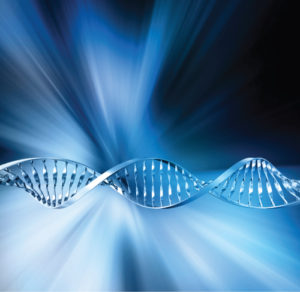
Knowing how much DNA you have is fundamental to successful experiments. Without a firm number in which you are confident, the DNA input for subsequent experiments can lead you astray. Below are six reasons why you should quantitate your DNA.
6. Saving time by knowing what you have rather than repeating experiments. If you don’t quantitate your DNA, how certain can you be that the same amount of DNA is consistently added? Always using the same volume for every experiment does not guarantee the same DNA amount goes into the assay. Each time there is a new purified DNA sample, the chances that you have the same quantity as before are lessened. Consequently, without knowing the DNA concentration of the sample you are using, the amount of input DNA cannot be guaranteed and experiments may have to be repeated.
5. Consistently using the same amount of DNA in your downstream assay. There are many variables that need to be taken into account during research. You need high-quality reagents that will help you answer your hypothesis, correct timing of measurements and cells of the right density among others. Make sure that the concentration of your DNA is not a variable. UV absorbance (A260nm) is more of an estimate than known quantity. A more sensitive quantitation method (e.g., using DNA-binding fluorescent dyes) offers a more solid measurement to ensure you know how much DNA that can be used for your experiments.
4. Knowing that the amount of DNA will be enough for several experiments. Repeating experiments because something did not work is frustrating. Needing to continuously isolate DNA each time you want to run an experiment is time consuming. After you quantitate your DNA, you will know if it is sufficient for one or more experiments. Being able to skip the DNA extraction step for a few experiments saves you some time and effort so you can focus on getting your assay done and analyzing your results.
3. Learning that your sample is too dilute before the next experiment is run. Sometimes, extracting DNA from some sample types can be problematic. This means your yield may be lower than desired. Some quantitation methods may not be sensitive enough to tell you how much you have in your purified DNA sample. The commonly used UV absorbance method can detect 2ng/µl in a perfectly pure sample. While some assays can use lower DNA input, others need larger amounts. Know that your DNA concentration is sufficient for the experiments you need to perform before you start. A sensitive quantitation method can determine if you have samples that are 0.5ng/µl or even less.
2.5 Spending more time at the beach. You know how much DNA you have, you consistently add the same amount as input for your assays and your experiments work. You have time to relax and enjoy the outdoors rather than redoing experiments or repurifying DNA.
2. Certainty that you are using the right DNA species. For some applications, knowing if you have double- or single-stranded DNA can be important. Even if you use an extraction protocol that preferentially isolates one or the other, UV absorbance measurements cannot distinguish between ssDNA and dsDNA. Using a species-specific fluorescent dye like the QuantiFluor® ssDNA System and the QuantiFluor® dsDNA System would ensure you are only quantitating the desired DNA molecules of interest.
1. Ensuring that the results refer only to DNA and not contaminating RNA or proteins. Using UV absorbance at 260nm to quantify DNA does not ensure that the results are only for DNA. Many other organic compounds, including proteins, common contaminants left over from purification methods like phenols and other nucleic acids (RNA, ssDNA and primers), also absorb at 260nm. Because these other compounds will contribute to the absorbance reading, you may grossly overestimate the sample concentration. Using sensitive fluorescent dyes with a two-point standard curve like the QuantiFluor® ONE dsDNA System with the Quantus™ Fluorometer accurately determine how much DNA you have with minimal interference from other nucleic acids and contaminants.
Post updated to remove broken links April 11, 2024.
Related Posts
Sara Klink
Latest posts by Sara Klink (see all)
- A One-Two Punch to Knock Out HIV - September 28, 2021
- Toxicity Studies in Organoid Models: Developing an Alternative to Animal Testing - June 10, 2021
- Herd Immunity: What the Flock Are You Talking About? - May 10, 2021

Nice one!